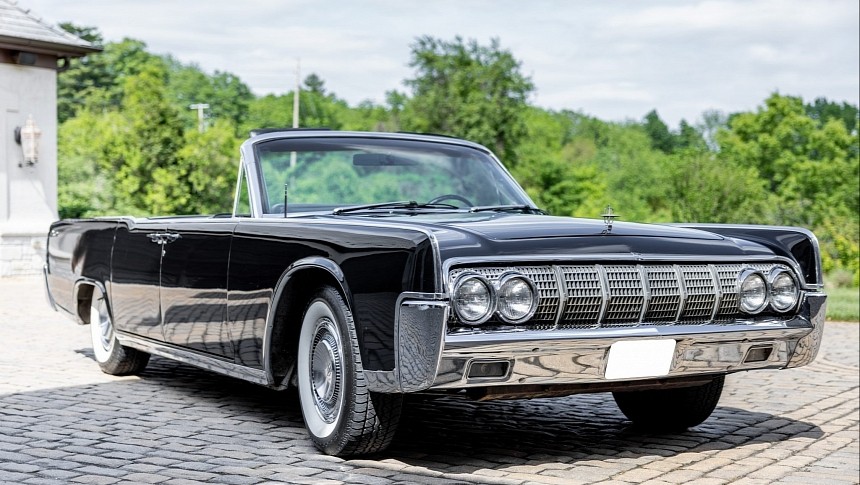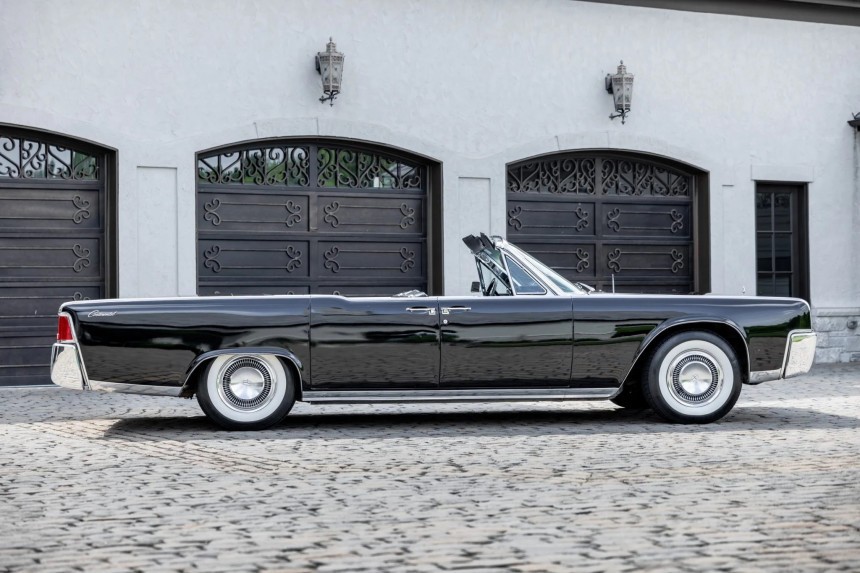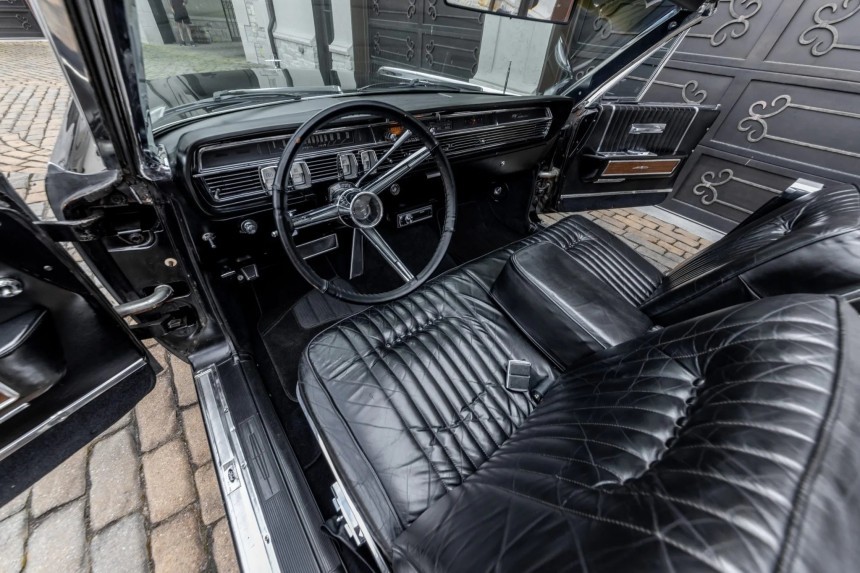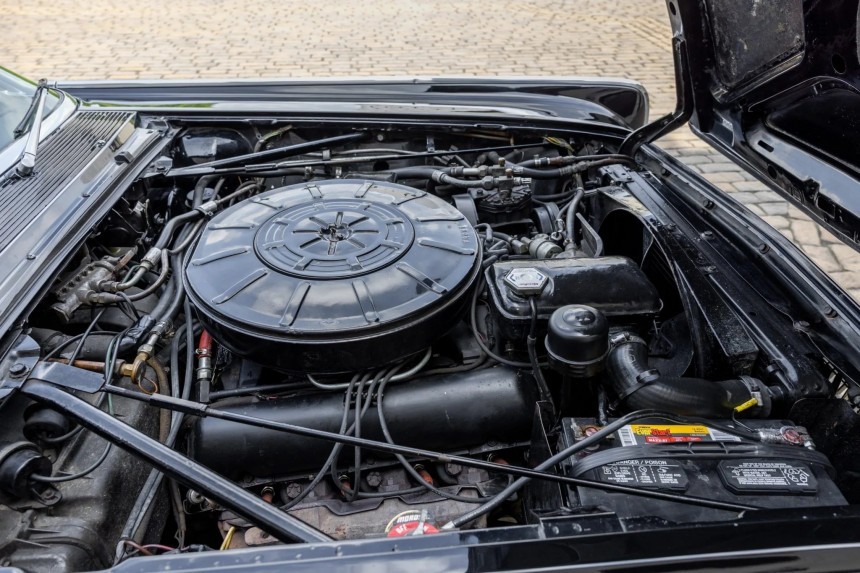Do you want to get tired just from walking around your car? Do you want to make a 30-point U-turn? Well, boy, oh boy, do I have the vehicle for you. This car is the most American thing out there: it’s unnecessarily massive, it has a big honker of a V8, and it was born from the Blue Oval. I am, of course, talking about the Lincoln Continental.
Nowadays, building a car like this is almost impossible, and you can blame production costs and safety stuff for that. But, back in the '60s, all that mattered was how big, over the top, and imposing the car was – and the Lincoln Continental was just that. Today, we can only admire it for its timeless beauty and what it stands for, and we shall do that by looking at this one from 1964.
But, before doing that, we should look at how it came to be and why it is so important to car culture. In the late 1950s, the Ford Motor Company was in a mess. Sales plummeted, the competition was fierce, and the company's direction could have been more precise. In that situation, Ford's luxury division, Lincoln, was on the chopping block.
The main problem with Lincoln was its direction. It had a mixed personality for its whole life, always hesitating between a top-of-the-line, ultra-luxurious brand and a company that made nothing more than higher-end Fords – and by the early '50s, Lincoln was just a fancier Ford.
Even though the economic state was pretty good after the war, and people were flocking in to buy fancy and shiny cars, no one was buying Lincolns. That was so because it never stood a chance design-wise against its arch nemesis - Cadillac, which offered over-the-top, luxurious boats with big fins and miles of chrome.
Lincoln tried to get in on this fin war with the '56 and '57 Premiere, which looked amazing - they were long and low and, in black, looked villainous. But ultimately, it wasn't what Lincoln was hoping for, and Cadillac continued to dominate the American luxury car market. So, Ford needed to do something, and even more so, do it quickly.
Ford came up with a new structure: you had plain-old Ford, with the Thunderbird as a higher-end sublabel, then you had Edsel and Mercury, and then Lincoln - and an entirely new brand called the Continental. It was an uber-luxurious top label to Lincoln, like how the Thunderbird was to Ford. In 1956, the Continental Mark II was released, and it was a gorgeous car, but it was unbelievably expensive to make and buy. Thus, Ford scrapped the idea and moved the Continental from the single model entity to the Lincoln brand.
Ford, the 1958 model year, Lincoln decided to go all out. While its competitors expressed extravaganza through outlandish design, Lincoln went another way: making the cars big. And when I say big, I mean gargantuan. In the late '50s, Lincolns were the largest post-war American cars made. But what the cars made up in size, they lacked in styling - they still look conservative, yet bizarre; take a look at those big bunny ears headlights and the miss-matched body lines, and these things don't sell.
So, yet another attempt at saving Lincoln fails. They had one more shot to succeed and could not mess it up. They needed to go big or go home. After a heated discussion between the Ford bigwigs, it was agreed that thanks to its rich history, Lincoln should stick around, but under one condition - Lincoln needed to reinvent itself fast. A group of designers started to work on this massive project, and after a quick research, they discovered something - Lincoln required to have its design language as Cadillac did.
Two designs came to life after a design war between two teams for the upcoming 1961 Ford Thunderbird. One was created by the team led by Joe Oros, which ultimately won, and the design became the new T-Bird, and the other group was led by Elwood Engel, the one that lost. But that design was also gorgeous, some going as far as deeming it too beautiful for the Thunderbird. So, that was the design chosen for the new Lincoln Continental.
So work began to bring it to life, but there was a problem. The new Lincoln needed to accommodate six comfortable passengers and have four doors. But when that was made, people found leaving the rear bench quite uncomfortable. So, a designer had a genius idea that now became the staple of the Continental - flip the back doors and create a suicide-door design. Now, let's take a deeper look at the car and see why it was so important to save Lincoln.
As I said, this one is from 1964 and oozes class. The massive 5.5 meters (216 in) long body was repainted in the same color that it left the factory – Satin Black, a murderous yet elegant color for such a car. This modernist masterpiece has a power-operated black convertible top and just the right amount of chrome to make sure it exudes class. You don't see a fin in sight, no over-the-top, exaggerated design cues - it's just elegant. Complementing the up-class look is a set of 15-inch steel wheels with chrome covers and whitewall tires wrapped around them.
Moving on to the interior, get ready to enter something more comfortable than most living rooms. Much black leather was used to upholster the front and rear bench seats. Again, same as with the outside, nothing is exaggerated. It's simple, and that's what makes it so good. Even the steering wheel (that was later wrapped in leather) fronts a modest gauge cluster - but it doesn't need to be flashy, as this is a high-class car, remember?
Getting under the hood is pointless, as this car's whole purpose is looking good while making you feel like you are sitting on a little cloud when traveling at cruising speed. Nonetheless, powering this heavy, 2.3-ton (5,505 lbs) beast is an equally-large 7.0-liter (430 ci) V8 producing 320 hp (324 ps) – more than enough to get you moving and cruising at highway speeds. A three-speed, dual-range automatic transmission handles smooth shifting.
This generation of the Continental was a triumph of restraint and good taste - and it showed. The idea of modest elegance appealed to a lot of potential buyers. Sales didn't skyrocket, but it cemented Lincoln's place in the market and its identity - the car for the wealthy and unassuming businessman.
Now, if you want that vibe and if you want to enjoy the class that a Continental brings, you should hop on one. They are still relatively affordable in the American classic car territory, like the one we have today. It isn't perfect, but it looks fantastic, and it currently sits at 49,000 dollars at auction in Wildwood, Missouri. It has 67,000 miles (107,000 kilometers) on the clock, and it comes with maintenance documentation, a clean Missouri title, and a divine ride, ready to make an impression wherever you decide to drive it.
But, before doing that, we should look at how it came to be and why it is so important to car culture. In the late 1950s, the Ford Motor Company was in a mess. Sales plummeted, the competition was fierce, and the company's direction could have been more precise. In that situation, Ford's luxury division, Lincoln, was on the chopping block.
The main problem with Lincoln was its direction. It had a mixed personality for its whole life, always hesitating between a top-of-the-line, ultra-luxurious brand and a company that made nothing more than higher-end Fords – and by the early '50s, Lincoln was just a fancier Ford.
Lincoln tried to get in on this fin war with the '56 and '57 Premiere, which looked amazing - they were long and low and, in black, looked villainous. But ultimately, it wasn't what Lincoln was hoping for, and Cadillac continued to dominate the American luxury car market. So, Ford needed to do something, and even more so, do it quickly.
Ford came up with a new structure: you had plain-old Ford, with the Thunderbird as a higher-end sublabel, then you had Edsel and Mercury, and then Lincoln - and an entirely new brand called the Continental. It was an uber-luxurious top label to Lincoln, like how the Thunderbird was to Ford. In 1956, the Continental Mark II was released, and it was a gorgeous car, but it was unbelievably expensive to make and buy. Thus, Ford scrapped the idea and moved the Continental from the single model entity to the Lincoln brand.
Ford, the 1958 model year, Lincoln decided to go all out. While its competitors expressed extravaganza through outlandish design, Lincoln went another way: making the cars big. And when I say big, I mean gargantuan. In the late '50s, Lincolns were the largest post-war American cars made. But what the cars made up in size, they lacked in styling - they still look conservative, yet bizarre; take a look at those big bunny ears headlights and the miss-matched body lines, and these things don't sell.
Two designs came to life after a design war between two teams for the upcoming 1961 Ford Thunderbird. One was created by the team led by Joe Oros, which ultimately won, and the design became the new T-Bird, and the other group was led by Elwood Engel, the one that lost. But that design was also gorgeous, some going as far as deeming it too beautiful for the Thunderbird. So, that was the design chosen for the new Lincoln Continental.
So work began to bring it to life, but there was a problem. The new Lincoln needed to accommodate six comfortable passengers and have four doors. But when that was made, people found leaving the rear bench quite uncomfortable. So, a designer had a genius idea that now became the staple of the Continental - flip the back doors and create a suicide-door design. Now, let's take a deeper look at the car and see why it was so important to save Lincoln.
As I said, this one is from 1964 and oozes class. The massive 5.5 meters (216 in) long body was repainted in the same color that it left the factory – Satin Black, a murderous yet elegant color for such a car. This modernist masterpiece has a power-operated black convertible top and just the right amount of chrome to make sure it exudes class. You don't see a fin in sight, no over-the-top, exaggerated design cues - it's just elegant. Complementing the up-class look is a set of 15-inch steel wheels with chrome covers and whitewall tires wrapped around them.
Getting under the hood is pointless, as this car's whole purpose is looking good while making you feel like you are sitting on a little cloud when traveling at cruising speed. Nonetheless, powering this heavy, 2.3-ton (5,505 lbs) beast is an equally-large 7.0-liter (430 ci) V8 producing 320 hp (324 ps) – more than enough to get you moving and cruising at highway speeds. A three-speed, dual-range automatic transmission handles smooth shifting.
This generation of the Continental was a triumph of restraint and good taste - and it showed. The idea of modest elegance appealed to a lot of potential buyers. Sales didn't skyrocket, but it cemented Lincoln's place in the market and its identity - the car for the wealthy and unassuming businessman.
Now, if you want that vibe and if you want to enjoy the class that a Continental brings, you should hop on one. They are still relatively affordable in the American classic car territory, like the one we have today. It isn't perfect, but it looks fantastic, and it currently sits at 49,000 dollars at auction in Wildwood, Missouri. It has 67,000 miles (107,000 kilometers) on the clock, and it comes with maintenance documentation, a clean Missouri title, and a divine ride, ready to make an impression wherever you decide to drive it.













